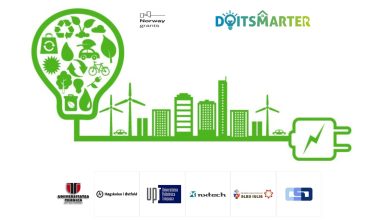New Materials for Green Energy Lithium-ion Batteries
At the Peter the Great St. Petersburg Polytechnic University (SPbPU), a research group (https://www.researchgate.net/profile/Maxim_Yu_Maximov) is carrying out several R&D of the cathode materials with an increased cyclic resource and new materials for green energy lithium-ion batteries.
At the end of October 2021, a huge resonant event related to green energy was the Glasgow Climate Change Conference in Glasgow (COP26), which was held within the framework of the UN Convention on Climate Change. An international treaty signed almost 30 years ago by all countries, aimed at limiting the impact of humanity on climate. The main goal of this event was to counteract greenhouse gas emissions, mainly by reducing the combustion of energy sources (oil, gas, coal, etc.).
The main goal of green energy is to use renewable energy sources (wind, sun, thermal, etc.) to provide electricity to consumers in different countries.
European countries are trying to increase electricity production from renewable sources. For the first time in 2020, the contribution of renewable energy in Europe has overtaken the share of traditional energy. Renewable energy sources are gradually replacing coal and nuclear power plants from European energy generation. In 2020, the output of wind and solar power plants grew from 9% to 15%, respectively, and in its combination, it produced a fifth part of all electricity in Europe. Among the leaders are Denmark, Ireland, Germany, and Spain. As a result, the specific CO2 emissions from electricity generation decreased by 25-30% compared to 2015.
Currently, there are a lot of high-capacity solar power plants in the world: 2.2 GW – Jodhpur, India; 1.17 GW – Abu Dhabi, United Arab Emirates; 550 MW – California, United States of America; 550 MW – Mojave Desert, California, United States of America; 290 MW – Agua Caliente, United States of America, Arizona, USA, etc. with less power.
According to Alexander Novak (ex-Minister of Energy of Russia), the Russian Federation plans to 10 times increase the share of renewable energy sources in the country’s energy balance – from the current 1% to 10% in 2040. This growth will occur mainly due to a strong reduction in the share of coal generation from the current 15% to 7%.
Currently, in Russia, the share of solar energy in generating capacities is still less than 1% of the total electricity generation. Solar power plants in Russia are relatively small compared to the world ones: Staromaryevskaya Solar power (Stavropol Region, 100 MW); Okhotnikovo Solar power (the Republic of Crimea, 82.6 MW); Pound Solar power (Astrakhan region, 75 MW); Samara Solar power (Samara region, 75 MW) and others with lower capacities.
The energy storage device (batteries) is one of the main and indispensable components required for the installation of power plants from renewable energy sources. Batteries price is 50% or more of the plant’s cost. Therefore, reducing the cost of batteries is important. Currently, lithium-ion batteries obtain clear advantages over other batteries: high capacity, low weight, fast charging, and high discharge currents, a large number of charge/discharge cycles (LiFePO4/C – 6000 cycles). These characteristics are enough to maintain the operation of the power plant without replacement of components, without repair and maintenance for about 10-15 years. In addition, LiFePO4 lithium-ion batteries allow storing the electrical energy at the lowest cost per cycle/discharge.
However, this cathode material has lower specific energy in comparison with the layered cathode materials LiNixCoyMnzO2 (LiFePO4 – about 140-150 Ah/kg, LiNixCoyMnzO2 – 160-200 Ah/kg). Therefore, cheaper technologies for the production of cathodes based on LiNixCoyMnzO2 are being developed to increase the energy density of lithium-ion batteries.



